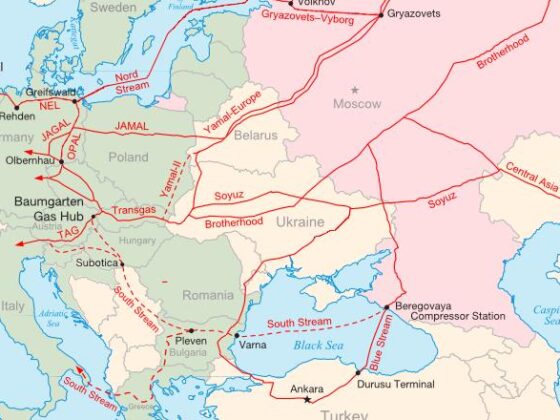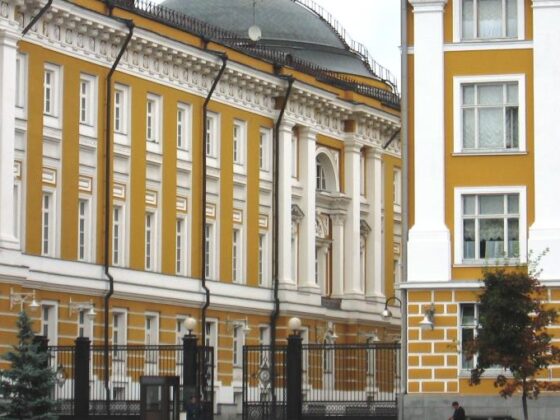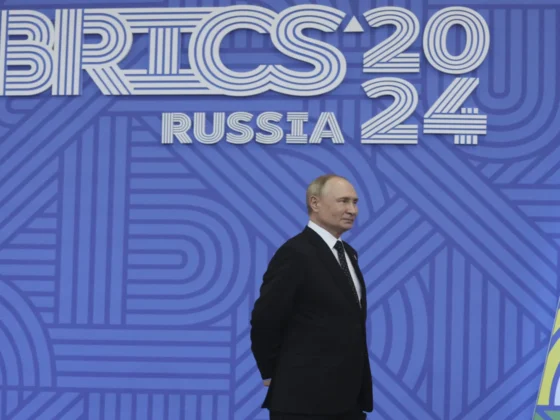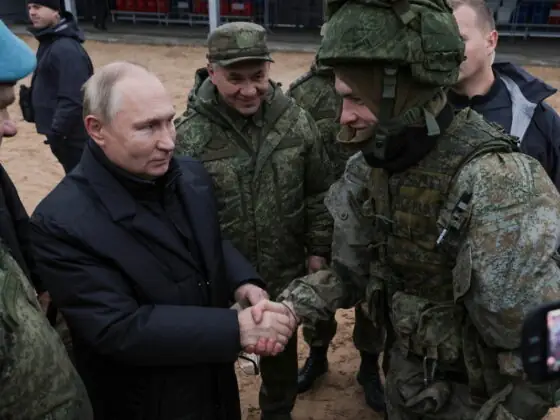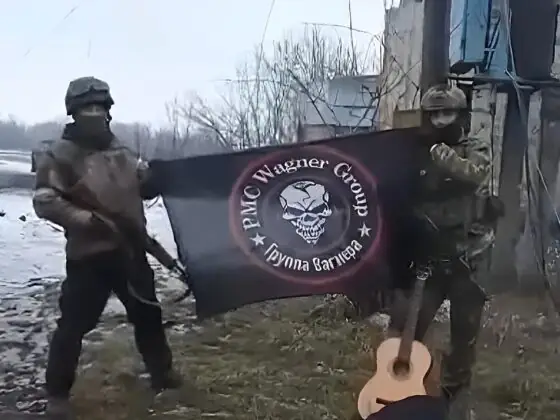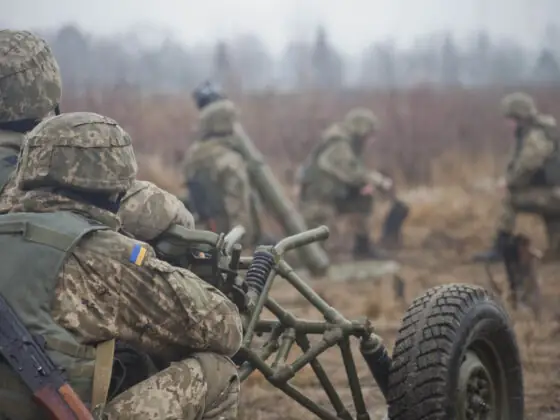(PONARS Eurasia Policy Memo) On November 10, a Russian-enforced ceasefire finally put an end to forty-five days of intense fighting between Armenian and Azerbaijani forces over the Nagorno-Karabakh enclave that has been under the control of Armenian forces since 1994. The deal signed by Armenia, Azerbaijan, and Russia sealed a historic defeat for Armenia, which lost the greatest portion of the lands it had conquered in 1994, including the southern region of Nagorno-Karabakh up to the highly strategic city of Shushi. In addition, Armenia conceded to opening a corridor through its southern border with Iran that will territorially link Azerbaijan to its Nakhichevani exclave. Although Turkey is never mentioned in the agreement, this last point seems to be a clear concession to Ankara, which is now unfettered to expand its presence to the Caspian Sea and on to Central Asia. Having been directly involved in the war on the Azerbaijani side, supplying it with high technology weapons such as the deadly Bayraktar drones and personnel, as well as coordinating military operations from the ground, Turkey managed to reimpose itself in the South Caucasus, a sphere that has Russian special influence, after a century of relative restraint.
The end of the violence seems to be the result of a Russia-Turkey cooperative that is highly disadvantageous for Armenians. Despite acceding to the presence of unpopular Russian troops in Nagorno-Karabakh, formally on Azerbaijani territory, President Ilham Aliyev managed to secure a favorable outcome. He now benefits from broad popular support for the restoration of territorial integrity and the redress of past humiliations while walking a tightrope of military reliance on Turkey, which many observers have assessed as a weakening of Azerbaijani sovereignty. Although Turkey was not able to deploy its own peacekeepers inside Nagorno-Karabakh, its role cannot be dismissed, particularly as its military involvement included hundreds of Syrian mercenaries shipped to Azerbaijan.
Karabakh War Mercenaries Post-9/11: A Globalizing Process?
According to the Syrian Observatory for Human Rights (SOHR), at least 2,580 Syrian mercenaries went to Azerbaijan, of which 541 have been reportedly killed. Despite vigorous Azerbaijani denial thereof, there is widespread evidence testifying to their employment in the Nagorno-Karabakh context.
The Working Group on the Use of Mercenaries of the United Nations Human Rights Office of the High Commissioner confirmed in an official communiqué on November 11 that Azerbaijan “relied on Syrian fighters to shore-up and sustain its military operations in the Nagorno-Karabakh conflict zone, including on the frontline.” It went on to state that “the way in which these individuals were recruited, transported and used in and around the Nagorno-Karabakh conflict zone appeared consistent with the definition of a mercenary, as set out by relevant international legal instruments, including the International Convention against the Recruitment, Use, Financing and Training of Mercenaries, to which Azerbaijan is a party.”
Although the use of mercenaries is not new in the Nagorno-Karabakh war, the legal and political framework in which it took place was remarkably different. During the war in the 1990s, captured documents indicated that Azerbaijan had hired Chechen and Afghan fighters. Among foreigners having taken part in the war on the Azerbaijani side, there were the famous jihadist Ibn-al-Khattab, and the Chechen nationalist later turned terrorist Shamil Basayev, two prominent figures of the Chechen insurgency. Nonetheless, the lack of a compelling legal framework prohibiting the use of mercenaries and a nascent Islamist movement in the context of a collapsing Soviet Union kept their role within limited boundaries.
The post-9/11 context and, a decade later, the emergence of ISIS, prompted the creation of a global anti-terrorism policy, enabling foreign interventions under the banner of “war on terror.” Armenia obviously tried to exploit the rhetoric of a global terrorist threat in order to encourage the international community to take a stand against Azerbaijan and Turkey. Armenian Prime Minister Nikol Pashinyan abundantly referred to the presence of “jihadists” in Nagorno-Karabakh, stating that “Artsakh [Armenian for Nagorno-Karabakh] is fighting against international terrorism, the targets of which are not separated by geopolitical borders.” His claims have been supported by French and Russian intelligence services that claimed to have evidence of the presence of “Syrian fighters from jihadist groups” and of “mercenaries and terrorists.”
Armenia also tried to take advantage of the timely conjuncture in Europe, which has seen a surge of terrorist attacks, namely in Vienna and France, that resonated with Armenia’s calls for a global struggle against the common jihadist threat. Despite those efforts and overall sympathy towards the Armenians in European societies, neither the United States nor Europe reacted in a substantial way.
Russia, Armenia’s only ally, with which it has a treaty of collective security (CSTO), only intervened in time to prevent a total collapse of the Armenian defenses, which would have certainly resulted in the ethnic cleansing of the Armenian population that remained in Nagorno-Karabakh. As for the OSCE Minsk Group, the only existing multilateral framework with a mandate to mediate a peaceful solution, it became effectively discredited in the eyes of Armenians. The unreadiness of Western countries to act in support of Yerevan, with its newly formed democracy, against the attack of two authoritarian governments that used mercenaries from the Syrian war theater, has been a great disappointment. In 2018, the peaceful Armenian Velvet revolution brought to power a democratically elected regime after two decades of authoritarian rule, a development that was enthusiastically praised by the EU, and skeptically welcomed by the Kremlin. As a consequence of the latest developments in Nagorno-Karabakh, Armenia’s ambitious rapprochement with the EU has been greatly jeopardized while its dependence on Russia has been substantially increased.
Beyond the Civilizational Discourse: A Complex Mix of Motivations
If the discourse in Armenia on Syrian mercenaries has essentially relied on a civilizational trope, the reality is more complex. The motivations of the fighters seem to be mainly monetary, and their attitudes and behaviors do not always coincide with what one would expect from people who fight for jihad. Moreover, there is a counterintuitive aspect to the idea that Sunni fighters would fight for a Shia country (Azerbaijan)—one that promotes secularism. Nonetheless, an Islamist component is present in these mercenaries’ discourse and individual biographies. Information gathered by independent researchers and reporters provides an interesting and non-univocal account of their motivations. The Syrian fighters sent to Nagorno-Karabakh were mostly recruited from the Syrian National Army (SNA), a proxy force created by Turkey in 2016 and located in the northern Syrian regions under Turkey’s occupation (Idlib, Afrin, El-Bab, Ras-el-Ain, and Tel-Abyad). They were promised between $600 and $2,000 for their service in Azerbaijan. Another group of foreign fighters present in Azerbaijan was found to be affiliated with the jihadist group Ajnad al-Kavkaz.
According to Elisabeth Tsurkov, a fellow researcher at the Center of Global Policy in Washington, D.C., and a specialist of the Syrian conflict, the SNA fighters are organized in several militias (Sultan Murad, Firkat Khamsa, Failak-Ash-Sham, Firkat Suleiman-Shah, and Jeish-Ash-Sham). Hired by Turkish recruiters and Turkish-backed commanders, they are mostly impoverished men, most of them lacking basic education and often involved in systemic criminality. She claims that “the areas under the control of SNA are characterized by a high degree of lawlessness and criminality. The factions are involved in kidnapping for ransom… they place checkpoints and collect at gun points taxation from the population, they operate secret prisons in which they torture and rape detainees.”
Many videos have emerged on social media since the beginning of the war, showing the mercenaries using religious language, which is quite characteristic in the Syrian context. In the videos, verified by independent media, we can hear mercenaries speak in the following terms: “Thank Allah, here are their bounty and ammunitions, God will make us triumph over each pig and sinner” (said by a fighter from the Hamza subdivision filmed in the Marjan village in the south of Azerbaijan, October 3, 2020). In another video, a group of Syrian mercenaries is seen riding on trucks and shouting encouragement at the local Azerbaijani population. They shout in Arabic, “The prophet Mohammad will always be our guide,” which is a very typical slogan of the SNA (this was filmed in Horadiz, Azerbaijan, on the border with Nagorno-Karabakh).
This jihadist-oriented rhetoric echoes the language lately adopted by Aliyev, who in one of his speeches promised to wipe out the “Armenians like dogs.” Despite the overarching monetary motivations of the fighters, it is interesting to notice how the religious discourse of a war between an Islamic and a Christian country has been instrumentalized by Azerbaijani and Turkish authorities as well. The rhetoric of war against Christian Armenians, and Russia’s allies, seems to have played into the motivation for those fighters to enroll. One of the Syrians captured by Armenian forces in Nagorno-Karabakh said that they were promised to be paid a $100 reward for each beheaded Armenian kufir (infidel). This is yet another example of how pecuniary aspects and religious discourse are often intertwined.
The substantial use of mercenaries served as a very convenient tool both for Azerbaijan and Turkey. They are considered to be a cheap and expendable force that might have indeed significantly reduced the number of Azerbaijani deaths. From the information we have, both from independent reports and testimonies, the fighters were used as cannon fodder, being sent to the front line while Azeri soldiers were in the rear.
They also exerted psychological stress on Armenian soldiers who were outnumbered and perceived facing Syrian war criminals and Islamist terrorists. Testimonies from the front allege that the fighters constantly shouted Allah u Akbar and seemed to be under the strong influence of drugs. One of our interviewees from the village of Karin Tak, located only a few kilometers from Shushi, told us how he spent days hiding in forests, and how loud the Syrians were and how they constantly repeated Allah u Akbar like a mantra. “We would pray that in case we get caught, it would be by Azeri soldiers, not the Syrians,” he said. Another of our interviewees from Martuni told us their regiment once fell into an ambush and they could hear the enemy surrounding them speaking angrily to each other. “This was neither Azerbaijani nor Turkish. The men were talking in another, unknown language.” Graphic videos emerged on Azerbaijani telegram channels supposedly showing the execution of Armenians by what appear to be men in Azerbaijani uniforms, reinforced this fear in the Armenian population remaining in Karabakh.
For Turkey, the deployment of SNA fighters is part of a broader tactic that it had been already massively carrying out in Libya. The men allow Turkey to expand its presence in different war theaters at low cost and it is also a way to control impoverished and undisciplined men left without any resources after the war in Syria had reached a stalemate.
Nevertheless, the Syrian mercenaries whom Presidents Recep Erdoğan and Aliyev intensively employed in Nagorno-Karabakh represent an important security threat for the region that might have high implications in the future. According to SOHR, out of 2,580 fighters deployed in Azerbaijan, over 900 returned to Syria (541 reported dead). In the above-mentioned communiqué released by UN experts, it is noted that it is “…worrisome that the Syrian fighters deployed to Azerbaijan are allegedly affiliated with armed groups and individuals that, in some cases, have been accused of war crimes and serious human rights abuses during the conflict in Syria, thus seemingly perpetuating a cycle of impunity and risking further abuses of international law.”
In case these people remain in Azerbaijan, local conflicts could emerge, as was the case with Afghan mercenaries who were brought in during the war in the 1990s. This time, however, their number and their socio-economic situation, as they are now left unemployed and have families to sustain back in Syria, might represent more substantial troubles. In any case, their presence is a destabilizing factor for the region, and the Azerbaijani authorities, who have denied their existence since the beginning of the offensive, will have to deal with them in the aftermath.
What their fate will be after the ceasefire is uncertain. The Azerbaijani side has strongly limited internet access during the whole period of combat and kept secret information on deaths, but dozens of Syrian mercenaries’ dead bodies have been shipped back to Syria. Their presence in Azerbaijan is also considered a security threat by Russia, which shares a border with Azerbaijan and has a lengthy and painful experience with terrorism in the North Caucasus. In many instances, Russia expressed concern over the presence of what it has called “jihadist mercenaries” with “blood on their hands.”
Conclusions
The use of mercenaries from the Syrian war theater in proxy wars has become common by both Russia and Turkey. In the context of the Syrian conflict, both Ankara and Moscow have recruited and exported local forces under their control, namely to Libya. While being on opposing sides in Syria and Libya, Ankara’s and Moscow’s foreign policy practices, including their respective quarrels with the West, follow quite similar patterns.
In the South Caucasus, they came to an understanding and ended up carving up an outcome from which they both benefit at the expense of Armenian interests. Turkey, an important NATO member, managed to efficiently display its military might with massive use of Bayraktar drones, a family-owned business of President Erdoğan’s son-in-law. Russia managed to keep a strategic balance in the region, maintain a good relationship with Azerbaijan, and push Armenia deeper into its pocket, thereby punishing Pashinyan and his rapprochement with the West.
This can be perceived as a victory for Azerbaijan that can now relocate its IDPs, who mainly come from the seven districts surrounding Nagorno-Karabakh that have been occupied by Armenia as a result of the 1991-94 war and are now returned. However, the new ceasefire has marginalized the OSCE Minsk Group (co-chaired by Russia, the United States, and France)—the only multilateral framework that has for twenty-five years tried to mediate a peaceful solution to the conflict. The result is a reframing of the peace process through a militarily imposed solution by Turkish-backed Azerbaijan and Russian-style diplomacy, all of which leaves little space for democratic processes.
The emergence of new actors—Syrian mercenaries—who have very little knowledge of the region and who pursue their own motivations adds to this anti-democratic picture. If not addressed, this trend—export of Syrian fighters to other war theaters by regional powers present in the middle eastern country—might reproduce a dangerous cycle of destabilization and human rights violations very detrimental for the societies involved. The use of impoverished young men whose country has been destroyed by a nine-year-long devastating conflict is a global human rights concern on its own.
Although Russia’s “boots on the ground” might provide some stability, the new deal is no peace deal, and the dynamic of mutual resentment and trauma, if unaddressed, might lead defeated Armenians to more conflictual positions in the future. Like the ancient Greek monsters Charybdis and Scylla that loomed over a deadly passage, Russia and Turkey are now more than ever the masters of the game in a very troubled South Caucasus.
Nona Shahnazarian is a Research Fellow at the Institute for Archaeology and Ethnography, Armenia. Anita Khachaturova is a PHD candidate at the Université Libre de Bruxelles, Brussels. The authors are thankful to Aude Merlin for her advice and constructive criticism.
[PDF]Homepage image credit.


